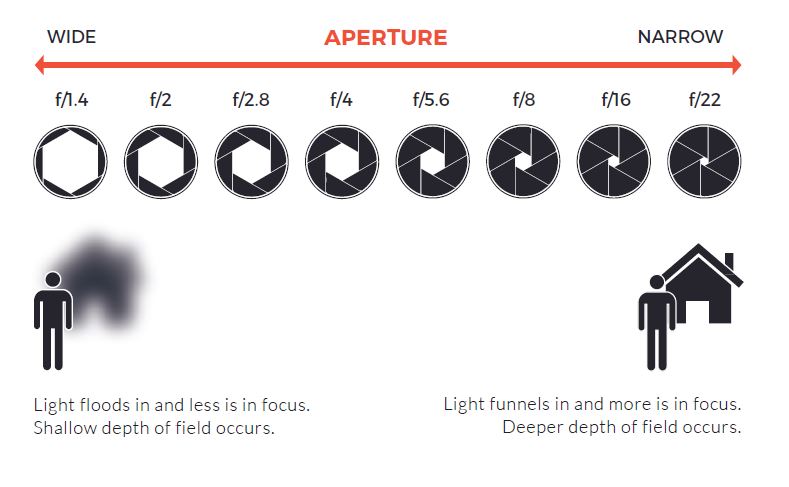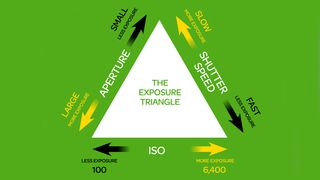ISO
The ISO is responsible for how much light is allowed to enter the camera. Unlike the aperture and shutter speed it is nearly always desirable to have the lowest ISO possible to reduce the noise within the photo. The standard ISO settings for use within the camera are anything between 100(or the lowest possible) - 800, this allows for a good ratio between lighting and noise. "Similar to shutter speed, it also correlates 1:1 with how much the exposure increases or decreases."(CambridgeInColour, 2019)
To experiment with the different levels of ISO and the noise it creates in my videos I shot short clips throughout day and night with different ISO levels.
Aperture
The Aperture controls how much lighting is allowed into the lens. This is controlled under an F-stop value with more light being allowed into the lens, the F-stop value will decrease respectively. Every time the F-stop value halves, the lighting area quadruples.
A camera's lower F-stop value correlates with a shallower depth of field witch determines what in the shot is in focus whether if its just a face or a full background.

Shutter speed
Shutter speed determines the time each frame is exposed to light with higher the shutter speed, the more light that will be allowed into the photo, where a faster shutter speed means a shorter exposure time to light, therefore creating a darker photo. The shutter speed and lighting correlates at a 1:1 ratio, for example when the exposure time doubles, the lighting in the shot will double.
Shutter speed can be used to freeze or exaggerate the appearance of motion through using a lower shutter speed to create a motion blur or either using a higher speed to freeze the shot and remove all elements of movement. In order to create a sharper image with no motion blur a tripod is recommended to remove all extra movement and therefore creating a smoother shot.

When choosing a shutter speed it should typically be doubled to the frame rate, an example being if you are filming at 24 frames per second, then the recommended shutter speed would be 1/50. Using a lower shutter speed will create a motion blur as i previously mentioned, while the higher the shutter speed the more crisp the video will be. In the examples below i have experimented with using low, normal and high shutter speed for my frame rate (which is 24fps) to show the effect this has an a video and the amount of motion blur that will occur.
Frame rate
Movies are usually displayed at 24fps, since this frame rate is similar to how we see the world, and creates a very cinematic look. Video games or sports events will often have a higher frame rate, as there’s a lot happening at once and a higher frame rate keeps the motion smooth. To get the highest quality video the shutter speed should correlate at around double the FPS.

Pull Focus
at this point I also learned how to use a pull focus effect. I will be able use this technique in short films.
Source List
CambridgeInColour, 2019 [Online]
Available from:
https://www.cambridgeincolour.com/tutorials/camera-exposure.htm

No comments:
Post a Comment